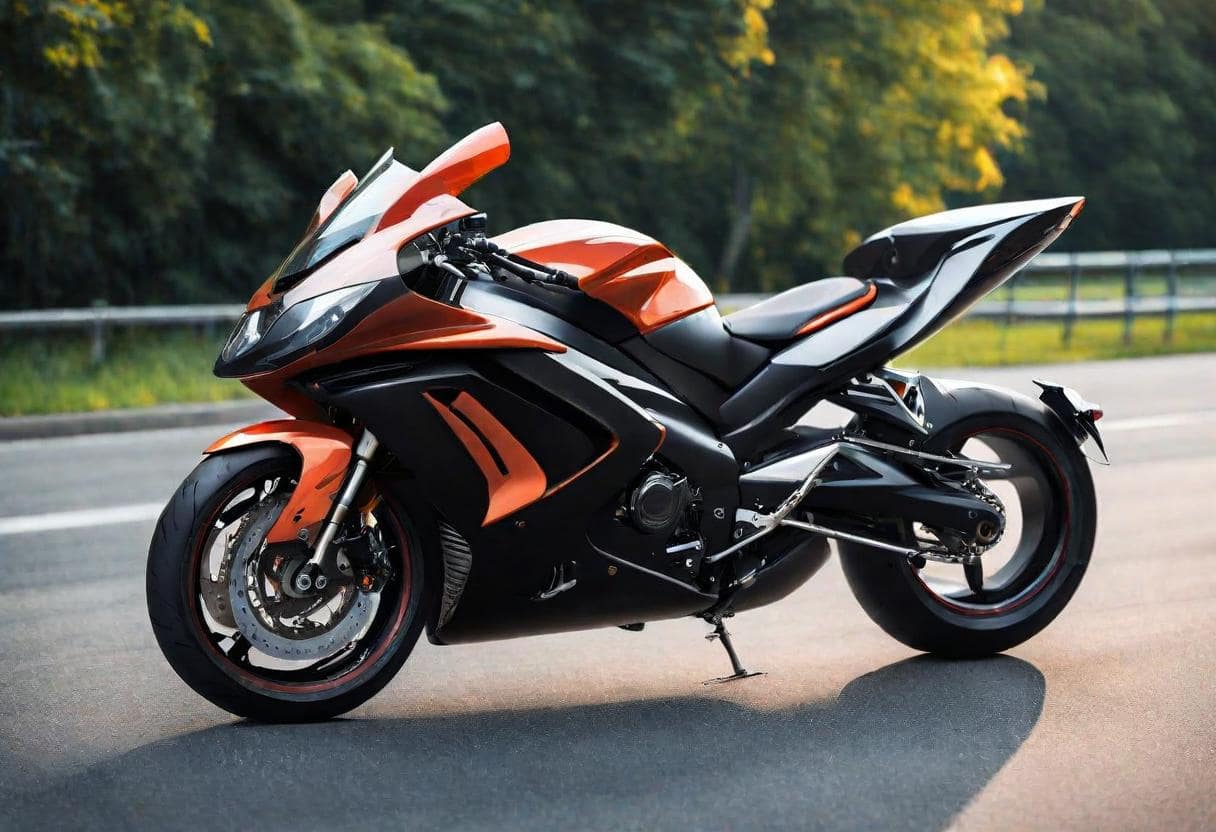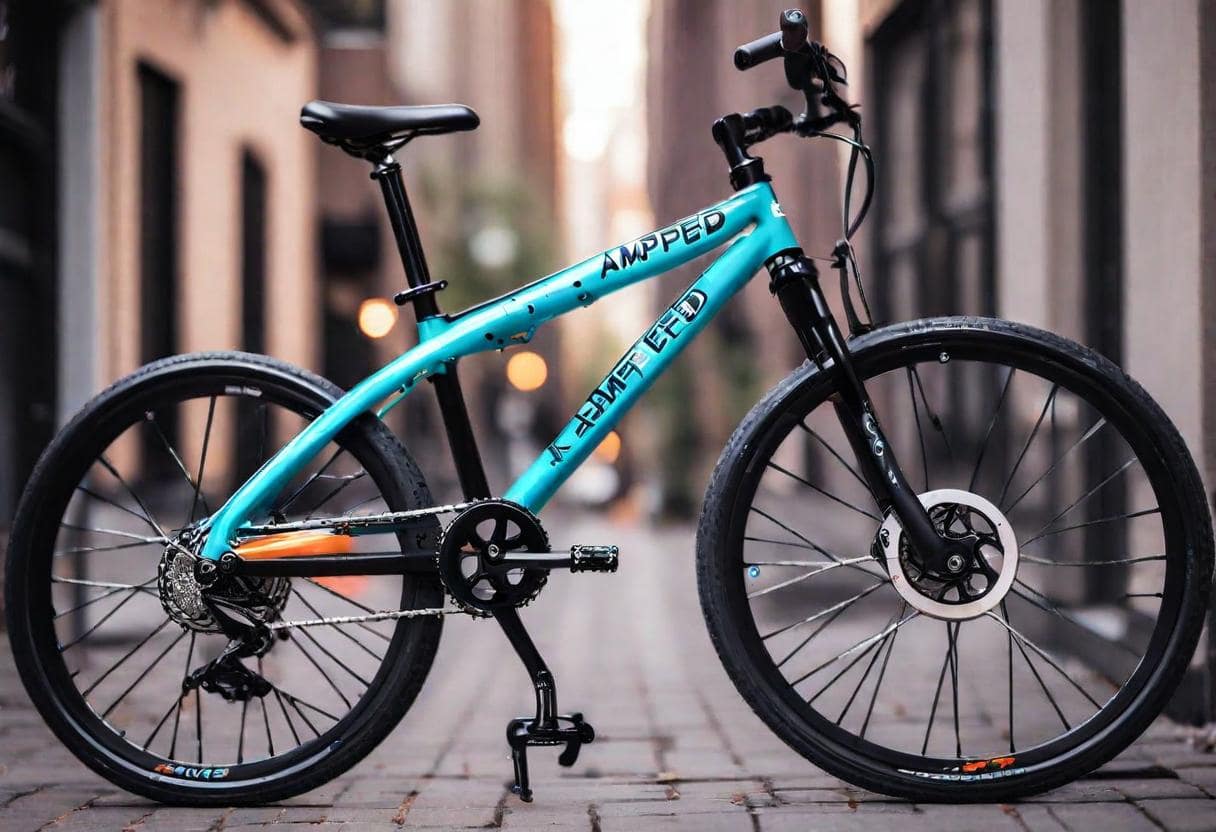When it comes to choosing the right bike, enthusiasts and professionals alike often find themselves overwhelmed by the myriad of options available. Gravity bikes, designed specifically for downhill and extreme terrain, have become increasingly popular. In this blog, we’ll delve into are gravity bikes good, and the pros, cons, and features of gravity bikes to help you determine if they’re the right choice for you.
What Are Gravity Bikes?
Gravity bikes, also known as downhill bikes, are specifically engineered for steep, rugged descents. They are built to handle the extreme demands of downhill mountain biking, offering enhanced stability, control, and durability. Unlike other mountain bikes, gravity bikes prioritize descending prowess over climbing efficiency.
Key Characteristics and Components
Gravity bikes are characterized by their robust construction, advanced suspension systems, and high-torque braking mechanisms. They are typically heavier than other mountain bikes to ensure they can withstand the rigors of downhill trails. Components such as wide handlebars, aggressive tires, and reinforced frames are standard.
Differences Between Gravity Bikes and Other Mountain Bikes
While cross-country and trail bikes focus on a balance between climbing and descending, gravity bikes are all about the descent. They feature slacker head angles for improved stability at high speeds and longer wheelbases for better control on steep, technical terrain. These differences make gravity bikes less efficient for uphill pedaling but unbeatable on downhill runs.
Key Features of Gravity Bikes

Now that we have a basic understanding of what gravity bikes are, let’s explore their key features in more detail. These features are what set gravity bikes apart and make them the preferred choice for downhill enthusiasts.
Advanced Suspension Systems
One of the most critical components of a gravity bike is its suspension system. Gravity bikes typically come with full suspension setups, featuring both front and rear shocks. This dual suspension system is essential for absorbing the intense impacts and vibrations that come with downhill riding.
Importance of Suspension in Gravity Bikes Suspension plays a crucial role in maintaining control and comfort during descents. It allows the bike to absorb shocks from rocks, roots, and drops, keeping the wheels in contact with the ground for better traction.
Benefits of Full Suspension vs. Hardtail Setups Full suspension bikes provide superior comfort and control compared to hardtails, which only have front suspension. This is especially important for gravity bikes, where the terrain is unpredictable and often brutal.
Durable Frame Materials
The frame of a gravity bike needs to be both strong and lightweight to handle the stresses of downhill riding. Gravity bike frames are typically made from materials such as aluminum, carbon fiber, and steel.
Comparison of Aluminum, Carbon Fiber, and Steel Frames
- Aluminum: Lightweight and affordable, aluminum frames offer a good balance of strength and cost.
- Carbon Fiber: Known for being extremely light and stiff, carbon fiber frames provide excellent performance but at a higher price.
- Steel: While heavier, steel frames are incredibly durable and offer a smoother ride due to their natural shock-absorbing properties.
Pros and Cons of Each Material
- Aluminum: Pros – Lightweight, affordable. Cons – Can be less durable than steel.
- Carbon Fiber: Pros – Lightweight, high performance. Cons – Expensive, can be brittle.
- Steel: Pros – Durable, comfortable. Cons – Heavier, can be prone to rust.
High-Torque Brakes
Effective braking is paramount for safety and control in downhill biking. Gravity bikes are equipped with high-torque disc brakes, which provide powerful and reliable stopping power.
The Necessity of Dual Disc Brakes for Control and Safety Dual disc brakes are essential for gravity bikes due to the high speeds and steep descents involved. They offer superior braking performance, especially in wet or muddy conditions.
How Braking Systems Enhance Downhill Performance High-torque brakes allow riders to modulate their speed precisely, giving them the confidence to tackle technical sections and sharp corners. This control is crucial for maintaining balance and avoiding accidents on challenging trails.
Performance on Different Terrains

Gravity bikes are specifically designed to tackle the most challenging terrains. Their performance varies greatly depending on the type of terrain you’re riding on.
Downhill Dominance
Gravity bikes truly shine when it comes to downhill riding. Their design is optimized for steep descents, providing unmatched stability and control. These bikes feature a slack head angle, which helps keep the front wheel steady and reduces the risk of going over the handlebars during sharp declines. Additionally, the longer wheelbase offers better balance and control at high speeds, making downhill riding a thrilling yet safe experience.
Features Contributing to Stability and Control:
- Slack Head Angle: Enhances stability on steep descents.
- Long Wheelbase: Improves balance and control at high speeds.
- Advanced Suspension Systems: Absorb shocks and maintain traction on rough terrain.
- Wide Handlebars: Offer better leverage and control.
Handling Rough Terrain
Navigating rocky and muddy trails is a breeze with gravity bikes. These bikes come equipped with aggressive tires that provide excellent grip, ensuring you stay grounded even in slippery conditions. The durable frame construction can withstand the impacts from rocks and roots, making gravity bikes a reliable choice for off-road adventures.
Importance of Tire Tread and Grip:
- Aggressive Tread Patterns: Enhance traction on loose or muddy surfaces.
- Wide Tires: Increase the contact area with the ground, improving stability.
- High-Quality Rubber Compounds: Ensure durability and better performance in diverse conditions.
Pros and Cons of Gravity Bikes

Every bike has its strengths and weaknesses, and gravity bikes are no exception.
Pros
Gravity bikes offer several advantages that make them a top choice for downhill enthusiasts.
Exceptional Control and Handling on Descents:
- Superior Suspension Systems: Provide smooth and controlled descents.
- Robust Braking Systems: Ensure reliable stopping power in all conditions.
Robust and Durable Construction:
- Reinforced Frames: Withstand the rigors of downhill riding.
- Durable Components: Designed to last even under extreme conditions.
Versatility in Different Off-Road Conditions:
- Adaptable Tires: Perform well on various terrains, from rocky trails to muddy paths.
- Adjustable Suspension: This can be tuned for different riding conditions.
Cons
While gravity bikes excel in many areas, they also have some drawbacks.
Heavier Weight Compared to Other Mountain Bikes:
- Increased Effort for Climbing: Makes uphill riding more challenging.
- Transport and Handling: Can be cumbersome due to the added weight.
Less Efficient on Flat or Uphill Terrains:
- Designed for Descents: Sacrifices efficiency in climbing and flat riding.
Higher Maintenance Costs Due to Specialized Components:
- Regular Maintenance Required: To keep the suspension and braking systems in optimal condition.
- Specialized Parts: Can be more expensive to replace or repair.
Who Should Consider Buying a Gravity Bike?

Gravity bikes are not for everyone. They are specifically designed for riders who prioritize downhill performance and are willing to invest in the necessary maintenance and gear.
Target Audience for Gravity Bikes:
- Downhill Enthusiasts: Riders who frequently tackle steep descents and technical trails.
- Bike Park Riders: Those who enjoy riding in dedicated bike parks with challenging downhill courses.
- Competitive Racers: Participants in downhill racing events who need top-notch performance and reliability.
Skill Level Required to Handle Gravity Bikes Effectively:
- Intermediate to Advanced Riders: Basic riding skills are not enough; experience in handling high-speed descents and technical terrain is crucial.
- Comfort with Maintenance: Regular upkeep is essential to ensure optimal performance and safety.
Types of Riders Who Would Benefit the Most:
- Adrenaline Seekers: Thrill-seekers who enjoy pushing their limits on challenging descents.
- Adventure Riders: Those who explore rugged and unpredictable terrains regularly.
- Competitive Riders: Cyclists participating in downhill or freeride competitions.
Safety and Comfort

Riding a gravity bike can be an exhilarating experience, but safety and comfort should always be a priority.
Safety Precautions
Proper safety measures are crucial when riding gravity bikes, given the high speeds and technical terrain involved.
Importance of Wearing Proper Safety Gear:
- Helmet: For maximum protection, use a full-face helmet.
- Body Armor: Protects against impacts and abrasions.
- Gloves and Knee Pads: Enhance grip and protect joints.
Tips for Staying Safe While Riding Gravity Bikes:
- Know Your Limits: Don’t attempt trails beyond your skill level.
- Regular Equipment Checks: Ensure your bike is in top condition before each ride.
- Ride with a Buddy: Having someone with you can be crucial in case of an emergency.
Comfort Features
Despite the rugged nature of gravity biking, manufacturers have incorporated features to enhance rider comfort.
Adjustable Seats and Handlebars:
- Customizable Fit: Allows for adjustments to suit your body size and riding style.
- Enhanced Comfort: Reduces fatigue and improves overall ride experience.
Impact of Suspension Systems on Rider Comfort:
- Shock Absorption: Minimizes the impact of rough terrain on your body.
- Reduced Fatigue: Allows for longer, more comfortable rides.
Cost Considerations

When deciding if a gravity bike is right for you, understanding the cost implications is crucial. Gravity bikes are generally more expensive than other types of mountain bikes due to their specialized components and robust construction.
Price Range of Gravity Bikes
Gravity bikes can vary significantly in price. Entry-level models typically start around $1,500, while high-end models can cost upwards of $5,000. This price range reflects the quality of materials, the sophistication of the suspension systems, and the overall build of the bike.
Factors Affecting the Cost
Several factors contribute to the cost of gravity bikes:
- Materials: Frames made from carbon fiber are more expensive than those made from aluminum or steel. Carbon fiber offers a superior strength-to-weight ratio, which is highly valued in downhill biking.
- Components: High-quality suspension systems, brakes, and drivetrain components increase the overall cost. For instance, dual disc brakes and advanced suspension setups are more expensive but essential for performance and safety.
- Brand: Established brands like Santa Cruz, Trek, and Specialized often command higher prices due to their reputation for quality and durability. However, lesser-known brands can offer competitive features at a lower cost.
Long-Term Value and Potential Savings
Investing in a high-quality gravity bike can lead to long-term savings. Durable frames and components mean fewer repairs and replacements over time. Additionally, high-end bikes often come with warranties that cover significant repairs, adding to their value.
Top Gravity Bike Models to Consider
When selecting a gravity bike, it’s helpful to know which models are highly recommended. Here are some popular gravity bike models that offer a range of features and price points.
Overview of Popular Gravity Bike Models
- Santa Cruz V10: Known for its advanced VPP suspension system, the V10 is a favorite among downhill racers. It offers exceptional control and stability, making it ideal for competitive riding.
- Trek Session: This bike features a robust frame and high-quality components, providing excellent performance on steep descents. Its adjustable geometry allows for customization based on rider preference.
- Specialized Demo: The Demo series is renowned for its durability and handling. With a low center of gravity and responsive suspension, it’s perfect for tackling technical trails.
Key Features and Price Points of Each Model
- Santa Cruz V10:
- Price: Starting around $8,000.
- Features: VPP suspension, carbon fiber frame, customizable geometry.
- Trek Session:
- Price: Starting around $6,500.
- Features: Aluminum or carbon fiber frame, adjustable geometry, high-torque disc brakes.
- Specialized Demo:
- Price: Starting around $7,000.
- Features: Full suspension, durable construction, low center of gravity.
Maintenance Tips for Gravity Bikes

Maintaining your gravity bike is essential for ensuring its longevity and optimal performance. Regular maintenance can prevent costly repairs and keep your bike running smoothly.
Routine Maintenance Practices
Routine maintenance involves several key tasks:
- Cleaning: Regularly clean your bike to remove dirt and debris that can cause wear and tear. Pay special attention to the drivetrain and suspension components.
- Lubrication: Keep the chain and other moving parts well-lubricated to reduce friction and prevent rust.
- Inspection: Regularly inspect your bike for signs of damage or wear. Check the frame, tires, brakes, and suspension for any issues that need addressing.
Importance of Professional Servicing for Complex Components
While routine maintenance can be done at home, some tasks require professional expertise:
- Suspension Tuning: Professional servicing ensures your suspension is tuned correctly for your weight and riding style. This is crucial for maintaining performance and safety.
- Brake Servicing: Hydraulic brakes require regular bleeding and pad replacement, which a professional can handle more effectively.
Tips for Prolonging the Lifespan of a Gravity Bike
- Store Properly: Store your bike in a dry, cool place to prevent rust and damage from the elements.
- Use Protective Gear: Protect your bike from scratches and dings by using frame protectors and other protective gear.
- Regular Check-Ups: Schedule regular check-ups with a professional mechanic to catch any potential issues early.
Conclusion
Gravity bikes offer exceptional performance for downhill riding and rugged terrains. While they come with a higher price tag, their advanced features and durable construction provide great value for serious riders. By understanding the cost considerations, choosing the right model, and maintaining your bike properly, you can enjoy the thrill of gravity biking to its fullest. Whether you’re a competitive racer or a weekend warrior, a well-chosen and well-maintained gravity bike can be your ticket to countless exhilarating rides.
FAQs
How does a gravity bike work?
A gravity bike is designed to excel in downhill riding. It uses a combination of advanced suspension systems, robust frames, and high-torque disc brakes to handle steep, technical descents. The bike’s geometry features a slacker head angle and longer wheelbase for improved stability and control at high speeds. The suspension absorbs shocks from rough terrain, keeping the wheels grounded for better traction, while the powerful brakes ensure precise stopping power.
What is gravity riding in MTB?
Gravity riding in mountain biking focuses on descending steep, technical trails with the help of gravity. Unlike cross-country biking, which involves both climbing and descending, gravity riding emphasizes the thrill and challenge of downhill runs. Riders use specialized gravity bikes equipped with advanced suspension, durable frames, and high-torque brakes to navigate rocky paths, drops, and sharp turns at high speeds.
Is riding a bike gravity?
Riding a bike typically involves both pedaling and coasting. Gravity plays a significant role when descending hills, as it helps propel the bike forward without the need for pedaling. In the context of gravity biking, riders specifically take advantage of gravity to gain speed and momentum on downhill trails. However, standard biking also relies on gravity for balance and movement, especially when going downhill.
Where are Guerilla gravity bikes made?
Guerrilla Gravity bikes are proudly made in the United States, specifically in Colorado. The company designs and manufactures its high-performance mountain bikes in-house, ensuring quality and precision. By keeping production local, Guerrilla Gravity maintains stringent quality control and supports the local economy, providing riders with durable and reliable bikes crafted for extreme terrain and downhill adventures.






